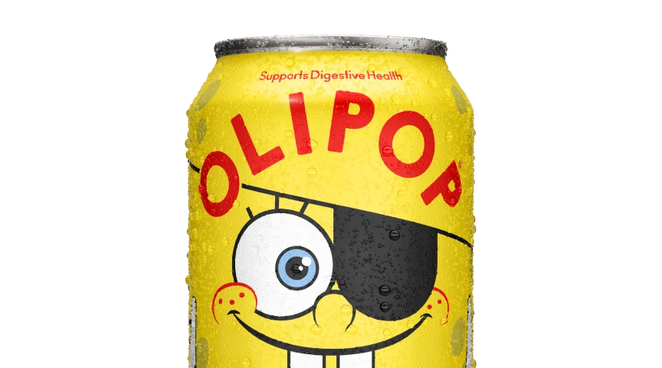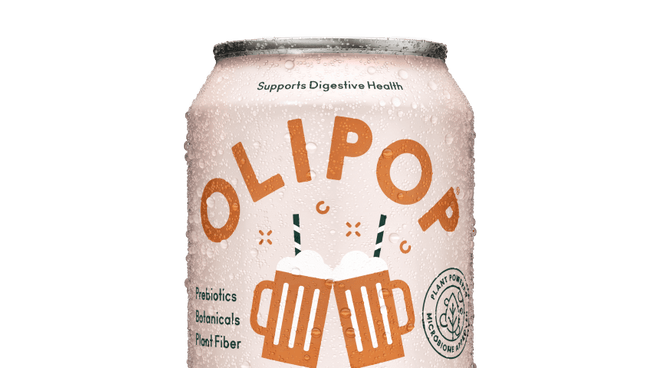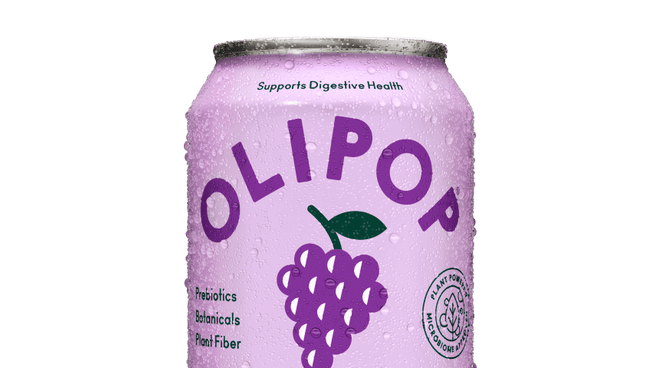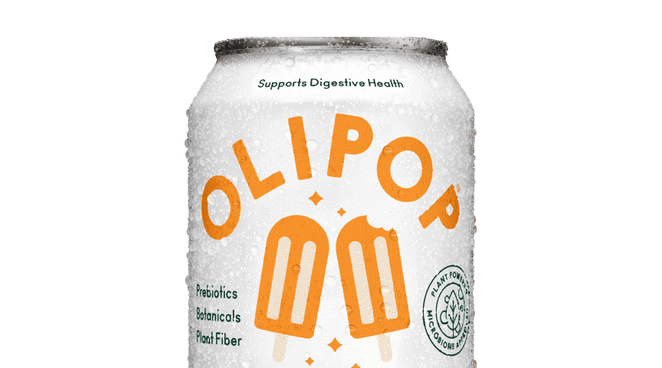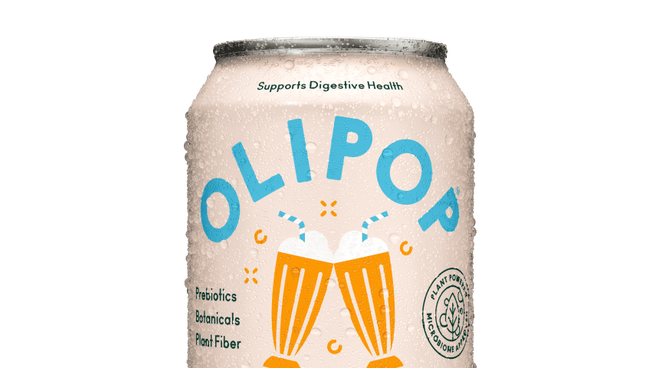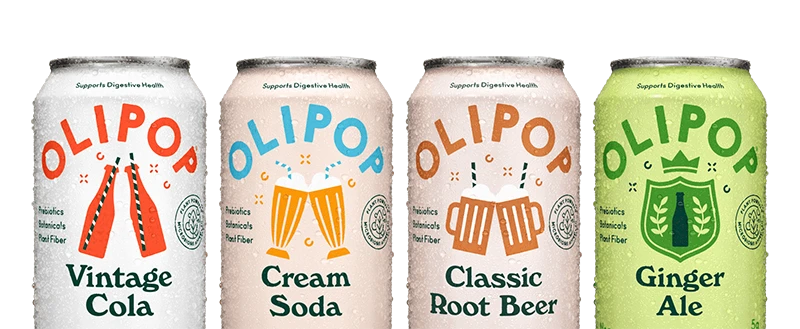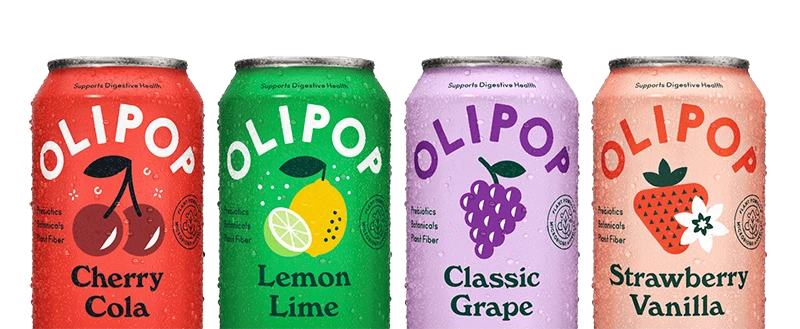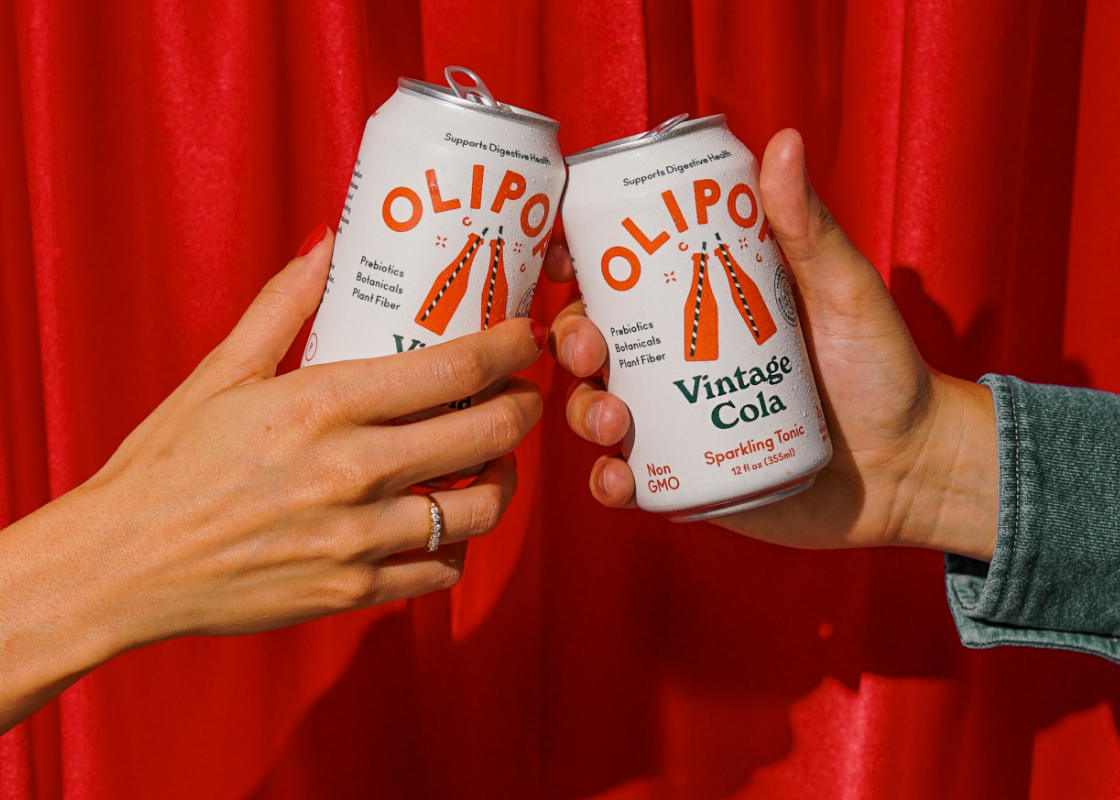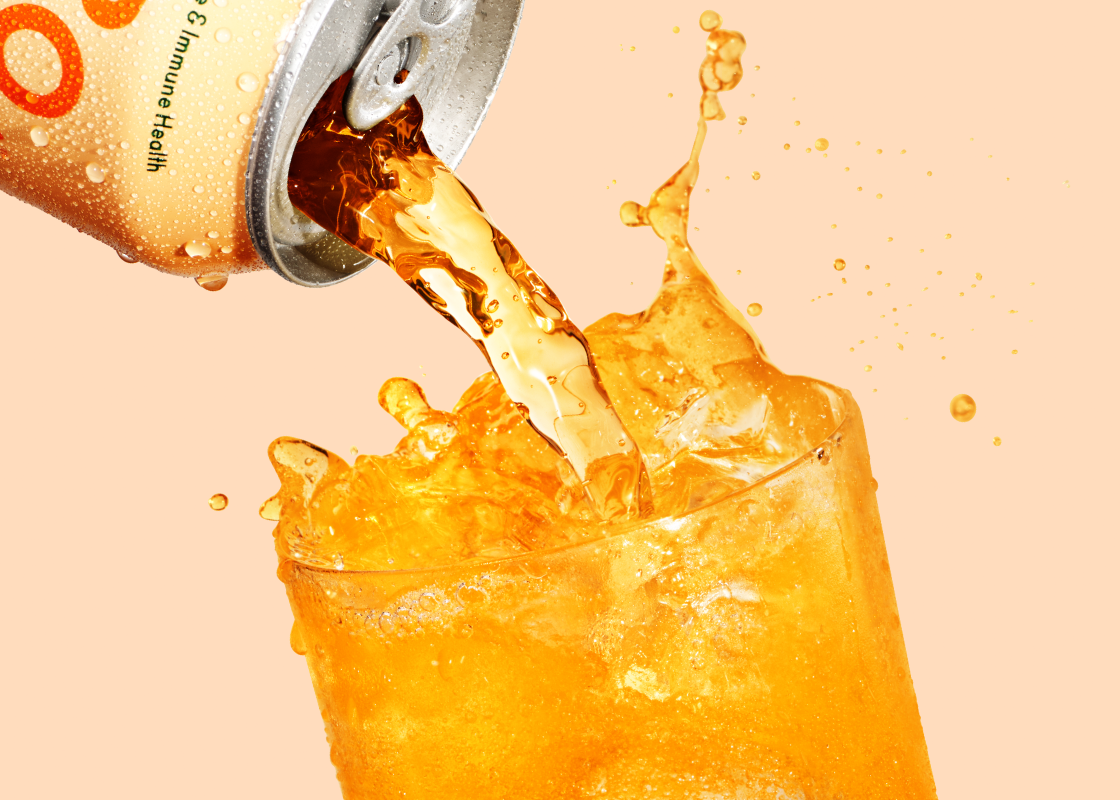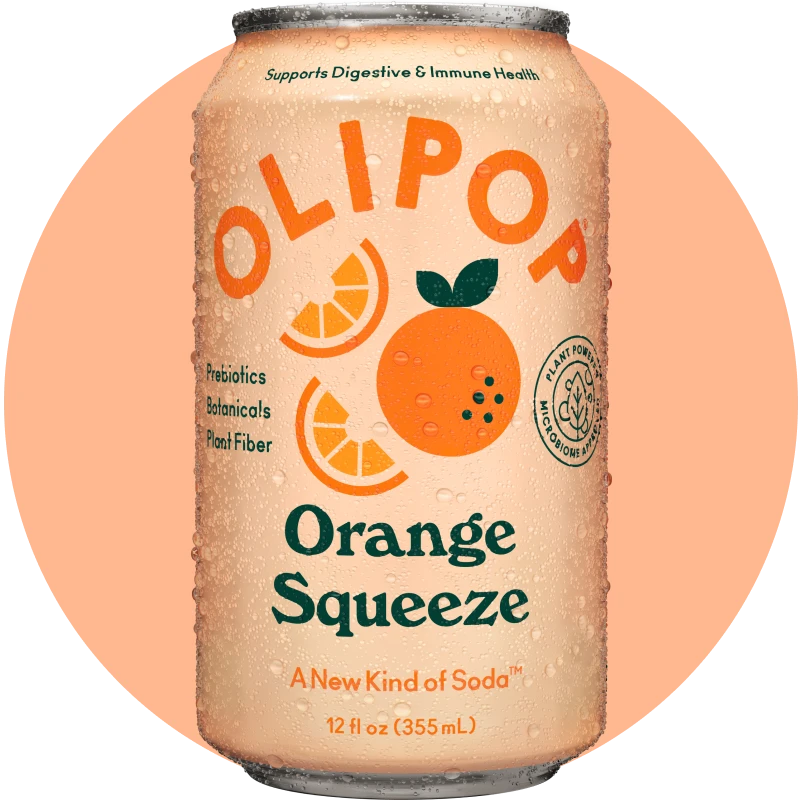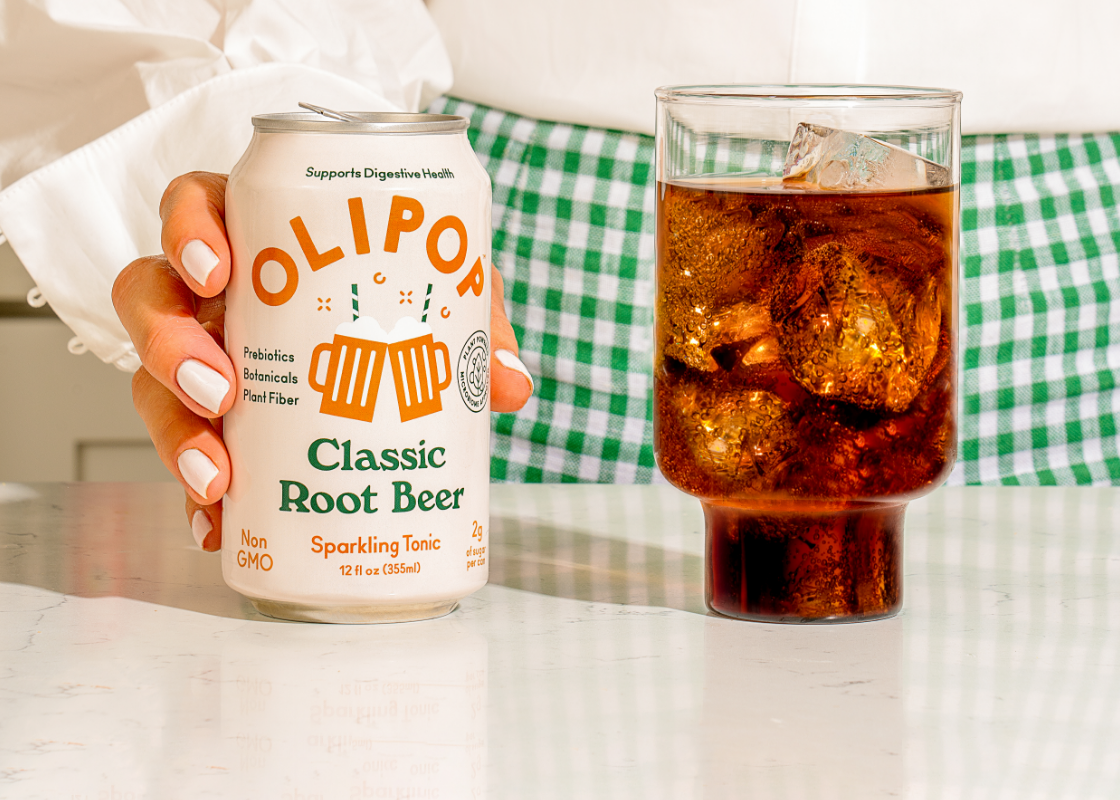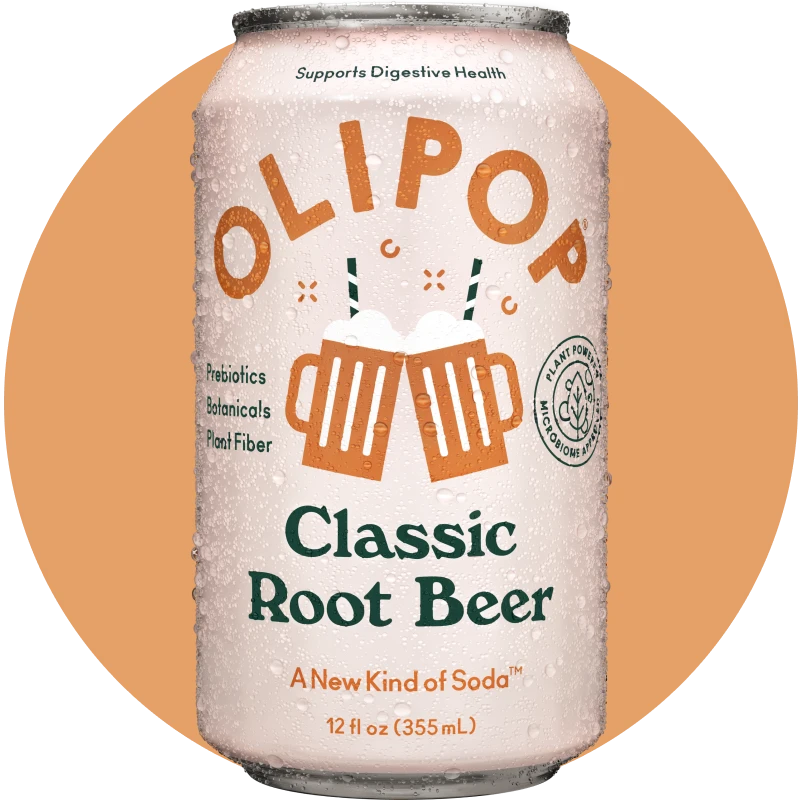At OLIPOP, we’re looking to change the future by reflecting on the past. We’ve taken a drink that's been dominated for decades by highly-refined sugar and artificial ingredients and made it into a high-fiber and tasty experience. That’s because we know that life is too short to load up on unnecessary sugar and drink a soda with zero nutrition. But it’s also too short not to satisfy your sweet cravings!
Although, you may be wondering why the price of a can of OLIPOP is more expensive than other sodas. There’s a simple answer: OLIPOP contains ingredients that can help you fill your fiber gap, while many other sodas only fill you up with empty calories and loads of sugar that may have detrimental effects on your health.
Keep reading to find out more about why you should value OLIPOP more than sugary sodas.
What Is OLIPOP?
OLIPOP tastes like the soda you grew up sipping, but with the added benefit of microbiome and digestive health support. That’s why we call it a “new kind of soda.” One that reminds you of summer days lounging by the pool or nights sitting around the dinner table with friends and family.
We’re still that bubbly beverage you know and love, with all the flavors you’ve come to enjoy. But our pop is made with research-backed ingredients that can support a healthy diet.
Why Is Traditional Soda Cheap?
When you buy a can of traditional soda (sugary with no nutrients), the reason you pay so little is because you’re getting so little. Traditional soda is essentially water, sugar, preservatives, and flavoring. However, there’s more to the story behind why soft drinks cost so little.
1. The Low Cost of High Fructose Corn Syrup
It’s not cheap to use fruit juice to help flavor and sweeten soda like OLIPOP does. In fact, the price of sweeteners is a huge factor in the overall cost of a can of soda—especially considering that the main ingredient in most soda (after water) is some sort of sugar, whether that’s high fructose corn syrup or refined cane sugar.
To increase profit margins, many soda companies try to cut corners with their ingredients as much as they can, and that starts with their sweetener of choice.
When it was first produced, manufacturers sweetened their soda with refined cane or beet sugar. However, due to tariffs, import quotas, and other economic factors over the years, refined sugar grew increasingly expensive in the United States.
In 1981, a law increasing tariffs on imported sugar raised the domestic price of sugar to twice its price on global markets.1 As a result, many soda brands started to use more and more high fructose corn syrup—which was a cheaper and sweeter alternative to cane sugar—in their formulas to cut down on costs. With corn subsidized by the U.S. government, this sugary syrup became a more affordable option for beverage companies.2
In November 1984, some soda companies agreed that sugar prices were getting out of hand. So they decided to join forces and simultaneously announced that they would be replacing all the cane sugar in their formulas with high fructose corn syrup.3 4 Following this announcement, the prevalence of corn syrup in our food supply skyrocketed. For the first time since the USDA Economic Research Service started tracking sweetener availability in 1970, corn sweetener availability exceeded that of refined sugar in 1985.5
High fructose corn syrup was by far the cheapest sweetener available for soft drink companies to use. On the other hand, OLIPOP uses fruit juice, cassava root syrup, and stevia leaf extract to sweeten and flavor our sodas. These ingredients may be more costly, but we think they’re worth it.
Excessive consumption of high-fructose corn syrup, particularly when used in soft drinks, can lead to numerous health issues.6 Instead, OLIPOP uses stevia, a plant-sourced, zero-calorie sweetener derived from the leaves of the Stevia Rebaudiana plant.7
2. Natural vs. Artificial Flavors
As you probably know, sodas get their taste from either (or both) natural and artificial flavors. These flavors help make soda taste more appealing and interesting, and not just like the sugar that they’re mostly made of.
These flavor extracts are chemical compounds or mixtures of compounds that are either derived from natural sources (“natural” flavors) or artificially synthesized in a lab without the need of any plant material (“artificial” flavors). While it’s possible for natural and artificial flavors to have the exact same chemical composition, the difference is that artificial flavors don’t require natural, more expensive sources to produce, making the end product cheaper.8
For instance, let's take a look at natural vanilla flavor, one of the flavors we use in our Classic Root Beer. Natural vanilla flavor is often derived from vanilla beans. And you can only get these beans from hand-pollinated flowering orchids in a small selection of tropical areas. Artificial vanilla, on the other hand, is chemically synthesized in a lab at mass scale. Both methods result in the flavor compound vanillin, which is the vanilla taste you know and love, but the artificial method is much cheaper to use.9
3. Lack Of Health-Supporting Ingredients
Many sodas have no nutritional qualities, which is another reason why it’s so cheap. By contrast, OLIPOP is a new kind of soda that can support your digestive health. We do that by adding fiber and prebiotics to our delicious sodas.
OLIPOP features OLISMART: our proprietary blend of botanicals, plant fibers, and prebiotics (the primo food source for the beneficial bacteria that live in your gut microbiome). Each ingredient is hand-picked for its benefits. We worked alongside leading microbiome researchers to select these ingredients to deliver a microbiome-supporting bang in every can.
What Ingredients Are In OLIPOP?
Looking at the nutrition panel of a can of OLIPOP is vastly different from many other soda brands. Let’s take our Classic Root Beer as an example:
- Carbonated Water
- OLISMART (a unique blend of botanicals, plant fibers, and prebiotics)
- Cassava Root Syrup
- Apple Juice Concentrate
- Natural Root Beer Flavor
- Lemon Juice
- Burdock Root extract
- Stevia Leaf extract
- Himalayan Pink Salt
- Natural Vanilla Flavor
- Sweet Birch extract
As you can see, we don't have high fructose corn syrup or artificial preservatives in our cans. Instead, all our flavors contain no more than 5g of added sugar per can. They are high-fiber and use sweeteners like cassava root syrup, real fruit juice, and stevia.
Functions of OLIPOP
Drinks can do more for your body than hydrate it—in both positive and negative ways. Certain beverages, like OLIPOP, may support your digestive health, while other drinks, like sugary soda, can do more harm than good.
Besides being a refreshing, thirst-quenching addition to your day, here are all the ways that an OLIPOP prebiotic soda can support a healthy lifestyle.
1. OLIPOP Supports Your Microbiome
There are very few systems in the body that affect as many parts of your health as the microbiome does. From regulating hormones to impacting your mood, the gut microbiome (a community of microbes, bacteria, fungi, and viruses that colonize your digestive tract) is central to human health. Essentially, tending to your microbiome is key to helping you feel good, both physically and mentally.
One of the best ways to nourish your microbiome is by eating more prebiotic fiber. These prebiotic fibers are what feed the good probiotic bacteria that live in your gut, playing an essential role in helping them do their job.
So what makes OLIPOP stand out from the crowd? We use several different prebiotic fibers in our recipe, such as Jerusalem artichoke inulin, chicory root inulin, and cassava root, which actually make a difference.10 Just take a look at our nutrition label!
2. OLIPOP is High Fiber
Speaking of fiber, diets rich in high-fiber foods support optimal digestive health. And studies show they also could help reduce your risk of developing some chronic diseases.11 Not bad, right?
There’s just one problem: 95% of American adults aren’t consuming enough fiber.12 They average American eats 16g of fiber per day, while the FDA recommends 28g per day.13 That massive deficiency is what nutritionists call the “fiber gap.”
OLIPOP is on a mission to help close the fiber gap. This is why every can of OLIPOP is considered high-fiber, thanks to our blend of prebiotic fibers.
3. OLIPOP Has 2-5g of Sugar
We think you’re sweet as can be, so your soda doesn’t have to be. There are 30+ grams of sugar and over 140 calories in some sodas—much of which comes from high fructose corn syrup. Yuck! The maximum amount of added sugar the American Heart Association (AHA) recommends you consume on a daily basis is 24 grams.14 A single soda could far exceed that number.15
OLIPOP is much (much) lower in sugar than leading non-diet sodas. Our Vintage Cola has 2 grams of sugar. You won’t find any more than 5g of sugar in any flavor of OLIPOP—we promise.
So, Why Is OLIPOP More Expensive?
OLIPOP may taste like the nostalgic sodas you’ve been sipping on your entire life, but it's a completely new kind of soda. One that supports digestive health! Plus, by swapping your typical can of soda out for a can of OLIPOP you’re doubly supporting your health by removing a sugary drink from your diet while replacing it with a high-fiber one. Can you really put a price on your health?
Want to learn more about all the reasons why to make the switch to OLIPOP? Check out OLIPOP Digest for all the latest resources, research, and information.
Sources
- Daniels, Lee A. “Coke, Pepsi to Use More Corn Syrup.” The New York Times, 7 Nov. 1984, p. 6.
- Philpott, Tom. “The Secret History of Why Soda Companies Switched From Sugar to High-Fructose Corn Syrup.” Mother Jones, 26 July 2019, www.motherjones.com/food/2019/07/the-secret-history-of-why-soda-companies-switched-from-sugar-to-high-fructose-corn-syrup.
- “Pepsi, Coke Turn to Corn Syrup.” United Press International, 6 Nov. 1984, www.upi.com/Archives/1984/11/06/Pepsi-Coke-turn-to-corn-syrup/2049468565200.
- O’Brien, Robyn. “How Coke and Pepsi Could Save Us From High Fructose Corn Syrup.” HuffPost, 17 Nov. 2011, www.huffpost.com/entry/why-coke-and-pepsi-should_b_707250.
- “Availability of Caloric Sweeteners Drops Nearly 19 Percent over Last 20 Years.” U.S. Department of Agriculture Economic Research Service, 14 Jan. 2021, www.ers.usda.gov/data-products/chart-gallery/gallery/chart-detail/?chartId=101051.
- Meyers, Allison M., et al. “High Fructose Corn Syrup Induces Metabolic Dysregulation and Altered Dopamine Signaling in the Absence of Obesity.” PLOS ONE, edited by Ferenc Gallyas, vol. 12, no. 12, 2017. Crossref, https://doi.org/10.1371/journal.pone.0190206.
- Arumugam, Balakrishnan, et al. “Stevia as a Natural Sweetener: A Review.” Cardiovascular & Hematological Agents in Medicinal Chemistry, vol. 18, no. 2, 2020, pp. 94–103. Crossref, https://doi.org/10.2174/1871525718666200207105436.
- “Section 101.22 Foods; labeling of spices, flavorings, colorings and chemical preservatives.” Code of Federal Regulations. Title 21 – Food and Drugs. Food And Drug Administration, Department Of Health And Human Services. April 1, 2010. http://www.gpo.gov/fdsys/pkg/CFR-2010-title21-vol2/xml/CFR-2010-title21-vol2-sec101-22.xml (accessed April 6, 2022)
- Kennedy, C. Rose. “The Flavor Rundown: Natural vs. Artificial Flavors.” Harvard University: Science in the News, 21 Sept. 2015, sitn.hms.harvard.edu/flash/2015/the-flavor-rundown-natural-vs-artificial-flavors.
- Slavin, Joanne. “Fiber and Prebiotics: Mechanisms and Health Benefits.” Nutrients, vol. 5, no. 4, 2013, pp. 1417–35. Crossref, https://doi.org/10.3390/nu5041417.
- Brownawell, Amy M., et al. “Prebiotics and the Health Benefits of Fiber: Current Regulatory Status, Future Research, and Goals.” The Journal of Nutrition, vol. 142, no. 5, 2012, pp. 962–74. Crossref, https://doi.org/10.3945/jn.112.158147.
- Quagliani, Diane, and Patricia Felt-Gunderson. “Closing America’s Fiber Intake Gap.” American Journal of Lifestyle Medicine, vol. 11, no. 1, 2016, pp. 80–85. Crossref, https://doi.org/10.1177/1559827615588079.
- “Daily Value on the New Nutrition and Supplement Facts Labels.” U.S. Food and Drug Administration, 25 Feb. 2022, www.fda.gov/food/new-nutrition-facts-label/daily-value-new-nutrition-and-supplement-facts-labels.
- Johnson, Rachel K., et al. “Dietary Sugars Intake and Cardiovascular Health.” Circulation, vol. 120, no. 11, 2009, pp. 1011–20. Crossref, https://doi.org/10.1161/circulationaha.109.192627.
- “Coca-Cola® Original.” Coca-Cola, us.coca-cola.com/products/coca-cola/original#. Accessed 6 Apr. 2022.
- Almario, Christopher V., et al. “Burden of Gastrointestinal Symptoms in the United States: Results of a Nationally Representative Survey of Over 71,000 Americans.” American Journal of Gastroenterology, vol. 113, no. 11, 2018, pp. 1701–10. Crossref, https://doi.org/10.1038/s41395-018-0256-8.
- Vartanian, Lenny R., et al. “Effects of Soft Drink Consumption on Nutrition and Health: A Systematic Review and Meta-Analysis.” American Journal of Public Health, vol. 97, no. 4, 2007, pp. 667–75. Crossref, https://doi.org/10.2105/ajph.2005.083782.
- Nseir, William. “Soft Drinks Consumption and Nonalcoholic Fatty Liver Disease.” World Journal of Gastroenterology, vol. 16, no. 21, 2010, p. 2579. Crossref, https://doi.org/10.3748/wjg.v16.i21.2579.
- Mullee, Amy, et al. “Association Between Soft Drink Consumption and Mortality in 10 European Countries.” JAMA Internal Medicine, vol. 179, no. 11, 2019, p. 1479. Crossref, https://doi.org/10.1001/jamainternmed.2019.2478.
- When you buy a can of soda, the reason you pay so little is because you’re getting so little—traditional soda is essentially just water, sugar, preservatives, and flavoring.
- OLIPOP contains prebiotics and fiber that can help support digestive health, while other sodas contain upwards of 30+ grams of sugar.








